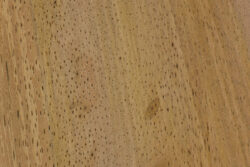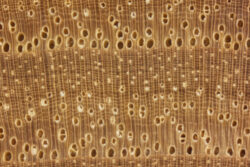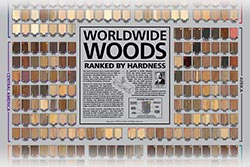Common Name and Type Genus: Cashew family (sometimes called the sumac family), derived from the Anacardium genus
Distribution: Primarily tropical regions in the Americas and Africa, though notable exceptions exist (such as Mangifera indica)
Family Size: About 80 genera and approximately 700-900 species
Notable Genera: The most commercially significant genera are Astronium (containing A. graveolens, goncalo alves) and Mangifera (containing M. indica, mango).
Comments: Despite this family’s type genus, Anacardium (containing cashew), Anacardiaceae contains numerous species scattered across many genera that are commercially significant to woodworkers (see genera list below).
Many trees and plants in this family can be quite toxic or allergenic. The Toxicodendron genus (contianing poison ivy) is most emblematic of this, though other related woods, such as regnas (Gluta spp.) have been shown to produce similar reactions if not seasoned properly. Perhaps correlated (based on their unique heartwood extractives), many species in the family also yield wood that is fluorescent under a blacklight.
Related Content:











Have you ever used the wood of the African wild plum, Harpephyllum caffrum? It is a common street tree in California, and I’m wondering what its properties are.
I have a sample in my collection, but I’ve not yet had a chance to look further into it. (Along with about 1000 other species!) Unfortunately, I couldn’t find any information on the wood.